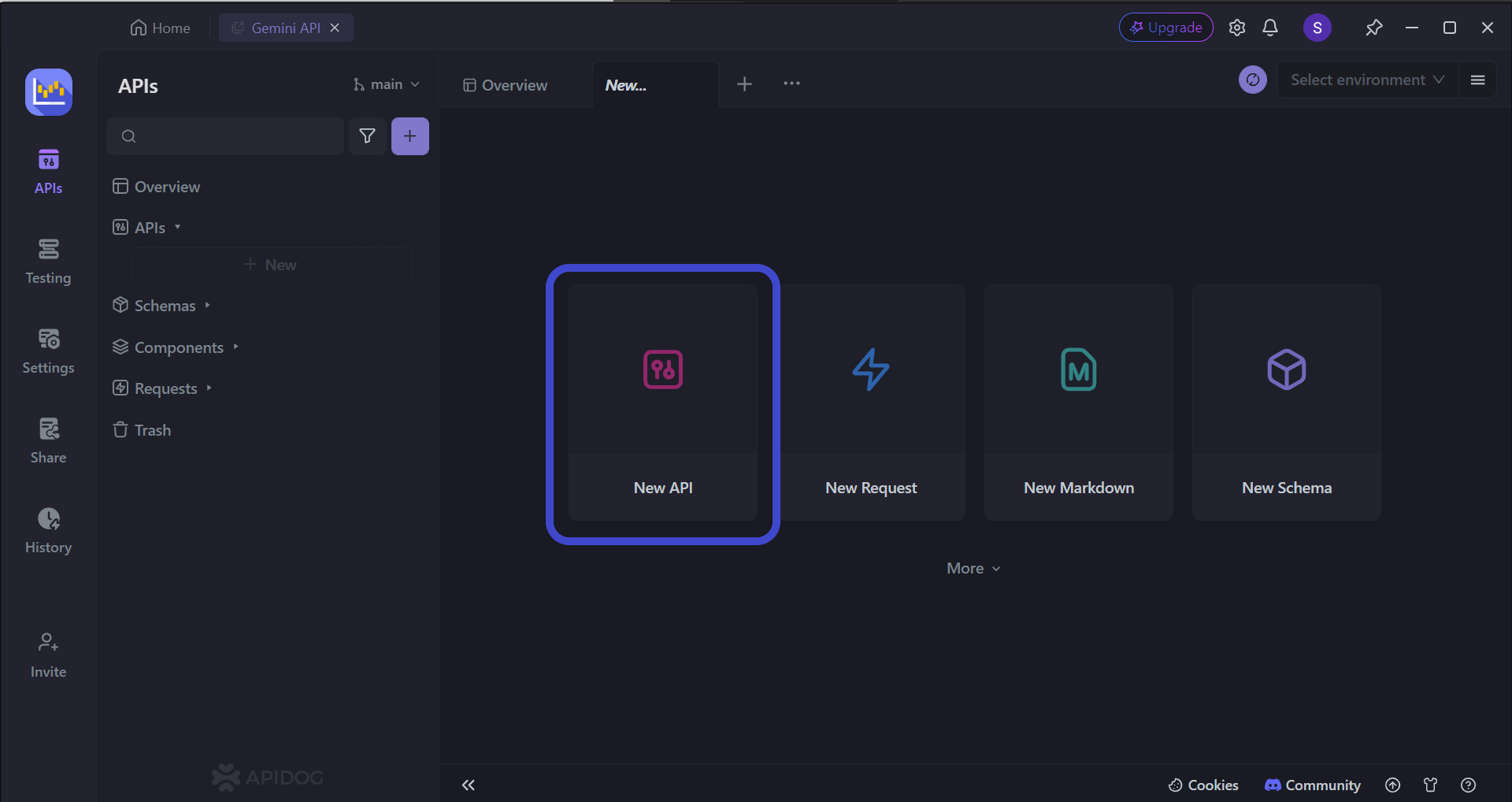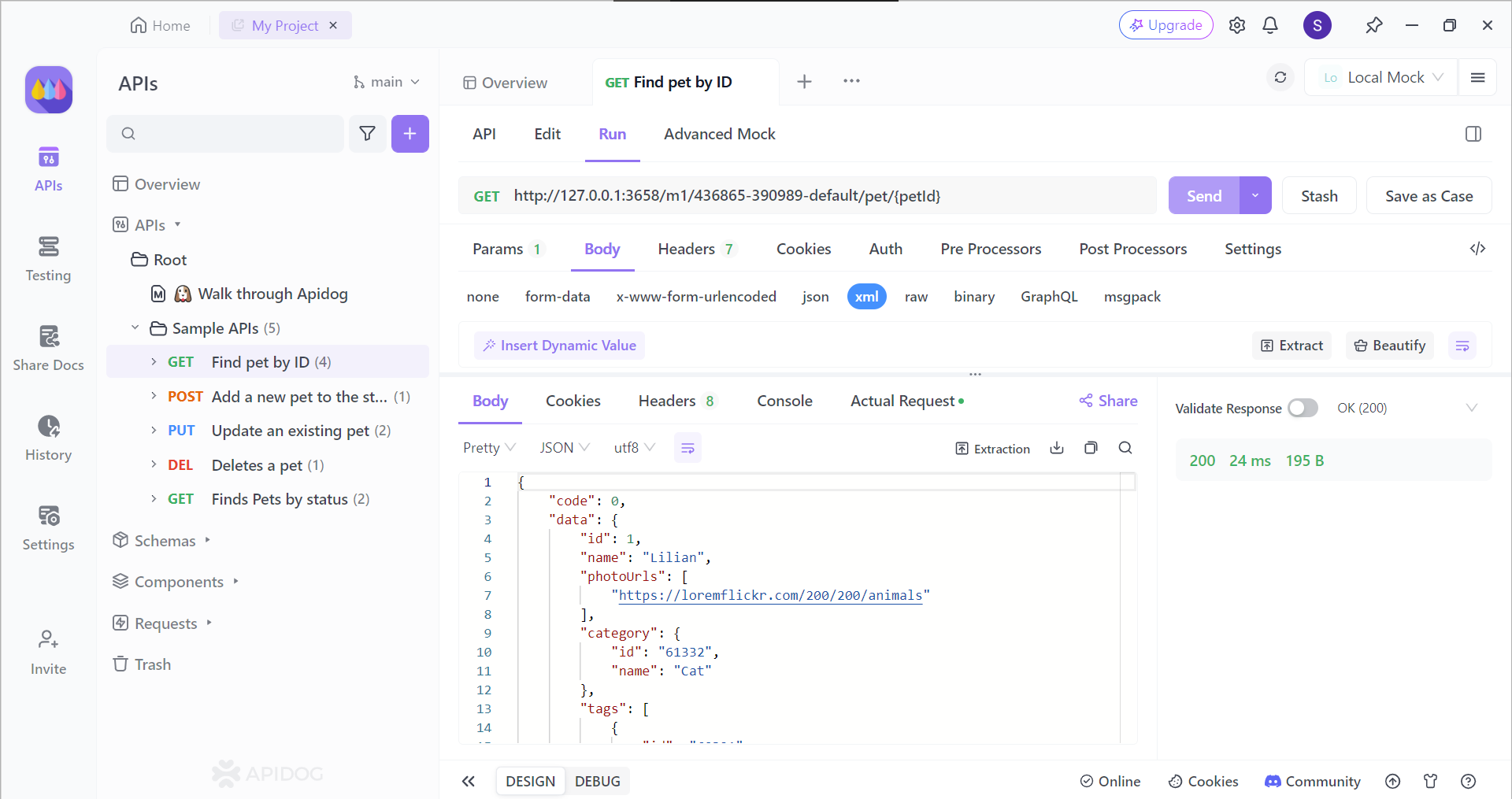In the intricate architecture of modern web applications, Back-End APIs (Application Programming Interfaces) play a critical role. These well-defined interfaces act as intermediaries, facilitating seamless communication between the user interface, the visible layer users interact with, and the backend functionalities that power the application's core logic.
Apidog is an all-in-one API development platform that equips you with all the necessary tools for professional API development. Along with a gorgeous and intuitive user interface, you can quickly get accustomed to the application.
To learn more about Apidog, make sure you click the button below! 👇

By providing a standardized communication channel, Back-End APIs empower developers to construct robust and scalable web applications that prioritize data security, efficient processing, and a seamless user experience.
The Concept of Back-end
Back-end, also referred to as server-side, encompasses the underlying functionalities and data management systems that power a web application. It represents the hidden layer users don't directly interact with but that orchestrates the application's core operations.
Key Aspects of Back-end
Server-Side Logic
The back-end serves as the application's central processing unit, housing the core logic that dictates its behavior. This logic encompasses a variety of crucial elements:
- Business Rules: These codify the application's essential functionalities and the manner in which it operates. For instance, in an e-commerce application, business rules might define how discounts are calculated or shipping costs are determined based on specific criteria.
- Data Processing Algorithms: Complex algorithms handle tasks like data manipulation, calculations, and transformations. These algorithms process user input, analyze data sets, and generate meaningful results for the application.
- Functionalities: Back-end logic is implemented through specific functionalities, often written in server-side programming languages like Python, Java, or PHP. These functionalities might handle tasks such as user registration, product searches, order processing, or content generation.
Data Storage and Management
The back-end serves as the central repository for storing and managing the application's data. This entails:
- Databases: Structured data is typically stored in relational databases like MySQL or PostgreSQL. These databases provide a well-organized and efficient way to store and retrieve vast amounts of information.
- Data Access Logic: The back-end implements logic to control access to and interaction with the database. This logic dictates how data is retrieved (using queries), updated, and deleted based on user actions and application requirements. It ensures that data integrity is maintained and that only authorized entities can access specific information.
Security
Protecting user information and application data is paramount. The back-end plays a crucial role in safeguarding sensitive data through robust security measures:
- Authentication: Mechanisms like username and password verification ensure that only authorized users can access specific functionalities and data within the application. This prevents unauthorized access attempts.
- Authorization: Once a user is authenticated, authorization controls define what actions they can perform within the application. This prevents unauthorized modifications or deletions of data.
- Data Security Measures: Back-end security also involves encryption of sensitive information in transit and at rest, secure storage practices, and measures to prevent data breaches or unauthorized access attempts.
API Communication
The back-end interacts with the front-end (user interface) through APIs (Application Programming Interfaces). These APIs act as a well-defined communication channel:
- API Endpoints: APIs provide structured endpoints, which are specific URLs that the front-end can use to interact with the back-end. Each endpoint has a specific purpose, allowing the front-end to request data, trigger actions (like adding an item to a shopping cart), or receive responses from the back-end.
- Data Exchange: APIs facilitate the exchange of data between the front-end and back-end. The front-end can send requests for data (e.g., product details), and the back-end responds with the requested information in a structured format (e.g., JSON or XML).
- Modular Design: APIs promote a modular design by encapsulating specific functionalities within the back-end. The front-end can then interact with these functionalities without needing to understand the inner workings of the back-end logic. This allows for a cleaner separation of concerns and increased development efficiency.
Benefits of Using Back-end APIs
Enhanced Developer Productivity and Code Reusability
- Modular Design: Back-end APIs promote a modular approach to development. Backend functionalities are encapsulated into well-defined API endpoints, allowing developers to reuse these functionalities across different parts of the application without duplicating code. This reduces development time and maintenance efforts.
- Focus on Front-End Expertise: By delegating data access and manipulation logic to the back-end API, front-end developers can focus on crafting a visually appealing and user-friendly interface. This separation of concerns improves developer efficiency and fosters specialization within development teams.
Streamlined Data Management and Scalability
- Efficient Data Access: Back-end APIs provide a structured way for the front-end to access and manipulate data. Developers can leverage pre-defined API methods to retrieve specific data sets, filter and sort data on the client-side, and transform it into a format suitable for the UI. This reduces the amount of data transferred between the client and server, leading to faster loading times and a more responsive user experience.
- Improved Application Scalability: Back-end APIs decouple the front-end and back-end logic, allowing them to scale independently. The back-end API can be optimized to handle increased data volumes and user concurrency, while the front-end remains focused on rendering the user interface. This flexibility enables applications to adapt to growing user bases and evolving functionalities.
Seamless Integration with Third-Party Services
- Expanded Functionality: Many external services offer Back-end APIs, allowing developers to integrate them seamlessly into their applications. This opens doors to a vast array of functionalities, such as social media logins, payment gateways, real-time data feeds, and cloud storage solutions. APIs eliminate the need to reinvent the wheel, allowing developers to leverage existing services and enrich their applications' features.
- Rapid Development and Innovation: By utilizing pre-built functionalities offered by third-party APIs, developers can accelerate the application development process. This frees them to focus on core functionalities and innovative features, leading to faster time-to-market for applications.
Improved Security and Maintainability
- Centralized Security Management: Back-end APIs provide a central point for implementing and managing security controls. Authentication and authorization mechanisms can be enforced within the API layer, ensuring only authorized users and applications can access sensitive data and functionalities.
- Simplified Maintenance: Changes and updates to core functionalities can be implemented within the Back-end API, automatically impacting all sections of the application that utilize the API. This reduces the need to update code across multiple locations, streamlining maintenance efforts and ensuring consistency throughout the application.
Flexibility and Future-Proofing Applications
- Technology Independence: Back-end APIs often adhere to established standards and protocols, making them technology-agnostic. This allows developers to choose the best back-end technologies without worrying about compatibility issues with the front-end. It also facilitates future technology upgrades without needing to rewrite the front-end entirely.
- Evolving Functionality: Back-end APIs provide a way to update and expand application functionalities without requiring extensive front-end changes. New features and functionalities can be exposed through new API endpoints, allowing the application to evolve and adapt to changing requirements without major disruptions to the user interface.
Apidog - Master Handling APIs with Clear and Concise Demonstrations
Apidog is an all-encompassing API tool that provides users with the necessary tools for professional API and software development. Regardless of whether you have a go-to application or are searching for a suitable API development environment, you should strongly consider using Apidog.

Become an API Provider with Apidog
Apidog empowers anyone to transform their ideas into custom APIs, eliminating the frustration of relying on pre-built solutions that might not fully align with your specific needs.

Start by press the New API button, as shown in the image above.

Getting started is as simple as clicking the "New API" button (see image above). This opens a configuration section where you'll define the blueprint for how applications will interact with your API. This blueprint encompasses several key elements:
- Communication Methods: Specify the types of requests applications can send (GET, POST, PUT, DELETE) to trigger different functionalities within your API.
- Endpoints: Define the exact URLs applications will use to connect and interact with your API. These URLs act as entry points for specific operations.
- URL Parameters: Outline any essential details applications need to include within the URL to target specific pieces of data. Imagine this like adding keywords to a search engine query to retrieve precise results.
- Functionality Descriptions: For each endpoint and its parameters, provide a clear explanation of its purpose and the actions it performs within your API. This essentially creates user instructions for applications that will interact with your API.
Dissect and Observe API Responses Using Apidog
Apidog eliminates the gap between design and testing, allowing you to immediately validate your API after creation. This catch-as-you-go approach lets you identify and fix issues early on, ensuring a smooth development process.

Testing an endpoint is as easy as entering its URL. Need to target specific data? Simply include any relevant parameters associated with that endpoint.

Hitting the "Send" button initiates the request and displays the API's response in full detail. The status code provides a quick success or failure indicator. For a deeper dive, you can examine the raw response, revealing the exact data format your client code needs to process information received from the backend servers.
Conclusion
Back-end APIs have emerged as a cornerstone of modern web development. They act as a bridge between the user interface and the core functionalities of an application, facilitating seamless communication and data exchange. This article delved into the key aspects of back-end APIs, highlighting their role in data management, security, and scalability. We explored how back-end APIs empower developers to build robust and efficient applications by promoting code reusability, streamlining data access, and enabling integration with third-party services.
Looking ahead, back-end APIs will undoubtedly continue to play a crucial role in shaping the future of web applications. As applications become increasingly complex and data-driven, the ability to manage data exchange and presentation efficiently will be paramount. Back-end APIs, with their emphasis on modularity, security, and a clear separation of concerns, are perfectly positioned to empower developers to meet these challenges and deliver exceptional user experiences on the web.



